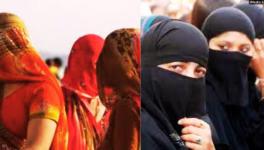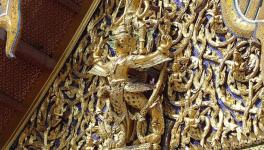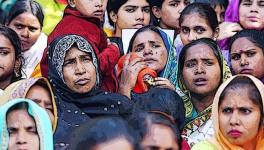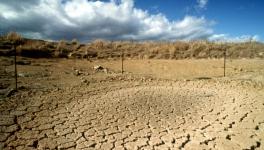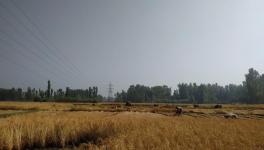Shaheen Bagh: Symbol of Assertion and Slice of History
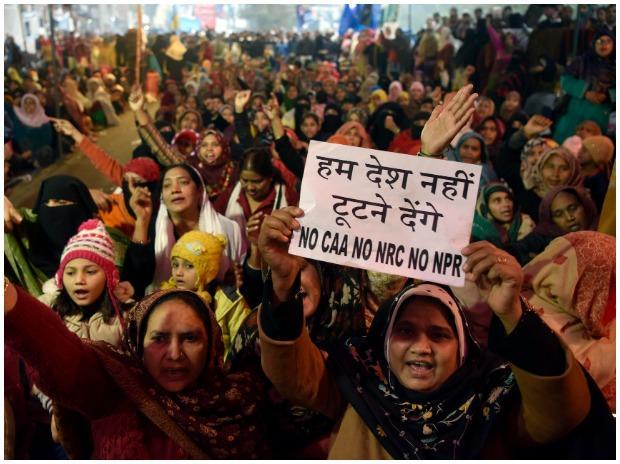
Shaheen Bagh is no longer a mere Muslim ghetto in New Delhi. Now the locality has become a strong and enduring metaphor of assertion and democratic mobilisation. Across India, it has become an emblem of popular protests demanding restoration of constitutional values and moralities. This can be best understood from a pertinent comment made by Gyan Prakash in the prologue to his 2018 book, Emergency Chronicles:
“There is nothing in India like the organic resistance in the United States to Trump’s racist agenda. The reasons are not far to seek. No history of civil rights battles stands behind the granting of equal rights to minorities in postcolonial India. Instead, it was the nationalist struggle against the British rule that produced a secular and democratic constitution. But with nationalism now hijacked by Hindu majoritarianism, the defence of minority rights can summon no history of popular struggle on its behalf. The law and institutions have also failed to push back. In the United States, on the other hand, ground-level resistance is robust.”
It is this gap identified by Gyan Prakash that the Shaheen Bagh movement had stepped in to fill. Against the backdrop of the brazenly-discriminatory Citizenship Amendment Act (CAA), 2019, India’s institutions (as well as society) are becoming increasingly majoritarian, and rabidly so. Left with hardly any choice after enduring years of discrimination, under-representation and marginalisation—in the economic sphere, in education, and in every other structure and process of power—they felt pushed into a corner, as mob lynching and political and administrative patronage to the lynchers were added as new chapters to this legacy of discrimination.
Ziya Us Salam and Uzma Ausaf, the journalist-author couple and also participant-observers of the Shaheen Bagh protests, have authored a new book, Shaheen Bagh: From a Protest to a Movement, published by Bloomsbury, Delhi. They underline in their preface: “...though technically against the CAA-NPR-NRC trilogy, it [the Shaheen Bagh protest] was actually a cry of anguish against all wrongs inflicted on the community and on the women.”
Notwithstanding all this, India’s Constitution does contain many guarantees, assurances and hopes. It is this hope, as India’s Muslims have come to understand, that the hegemonic majoritarian forces seek to snatch from them in a brazenly institutionalised manner through the CAA. They understand that the BJP-led government’s position on minorities is consistent with the unmistakably Zionist ideology that dictates how the Palestinians are treated by the state of Israel: only the Jews are entitled to citizenship, non-Jews are lesser citizens, as articulated superbly in Sammy Smooha’s 2002 essay, “The Model of Ethnic Democracy: Israel as a Jewish and Democratic State”. Even more worrisome is the fact that some significant Western countries are comfortable with this discriminatory citizenship arrangement in Israel.
In India, under a BJP re-elected in 2019, institutionalised discrimination in citizenship laws began with the Assam NRC experience. There were inconsistencies between the statements of the Prime Minister (for example, what he said in his Ramlila Maidan speech in Delhi on 22 December 2019) and the Home Minister’s statements in a later televised interview. The latter did not specify which documents would prove citizenship—only that all existing identity documents would not suffice. This further contradicted the address of the President inside Parliament in June 2019. The resultant utter lack of clarity about the documentation that would be required to prove citizenship made even more acute the insecurities of citizens, particularly the Muslim communities.
Mihir Desai, writing in the Economic & Political Weekly on 15 February, observes, “The Citizenship (Amendment) Act, 2019 is unconstitutional for its discriminatory and arbitrary provisions. The linked exercises of the National Population Register (NPR) and the National Register of Citizens (NRC) threaten to disenfranchise crores of [Muslim] people, rendering them stateless and without rights. The combination of CAA with NPR-NRC would produce consequences that are detrimental to the stable and harmonious functioning of our society and policy.”
The Shaheen Bagh protests were a response of the beleaguered Indian Muslims to this move by the state to snatch away the Constitutional guarantees of citizens. Salam and Ausaf make a significant step towards chronicling and documenting this movement. Salam has earlier chronicled the series of lynching of Muslims, which mostly took place in the name of protecting cows. This majoritarian assertion, equipped with brute state power, has been in the making since long—at least since 1925, when the RSS was founded. It acquired a renewed momentum with the Gujarat pogrom in February 2002.
The best prognosis of the increasingly reactionary attitude of the large and growing Hindu middle class—towards minorities in particular but also generally against all oppressed sections—is to be found in the concluding paragraphs of Achyut Yagnik and Suchitra Sheth’s Shaping of Modern Gujarat (2005),
“It appears that Gujarati Hindu society in the post-2002 phase is not ready to look within. A majority of them, particularly the middle class, think that ‘the outsider’—-English media and academia and the so called ‘pseudo secularists’—are out to malign them and tarnish the image of Gujarat [read India]. The Gujarati [read Indian] media, most university teachers and literati [now also add social media chatterati] are also not ready to look at or critically examine the issues related to development models or ecological degradation or steady marginalization of the bottom 20 percent of Gujarati [read Indian] society.
For the powerful Savarna middle class, even the Indian Constitution is becoming less and less relevant because they have successfully created a system whereby they can circumvent its vision as well as legal framework to protect and perpetuate their hegemony. They draw inspiration from the ‘market’ and try to empower themselves through the mechanism of the market. The march towards greater urbanization and industrialization would continue and the middle class will become more powerful in the coming decades; but their outlook and future action is likely to be shaped by global-local linkages expressed through market forces. They would support Hindu nationalism [read supremacism] as long as this ideology supports their aspirations.”
Similar apprehensions were foreseen by Fareed Zakaria in his 2003 book, Future of Freedom: Illiberal Democracy at Home and Abroad,
“Ethnic conflict is as old as recorded history, and dictatorships are hardly innocent in fomenting it. But newly democratizing societies display a disturbingly common tendency toward it. The reason is simple: as society opens up and politicians scramble for power, they appeal to the public for votes using what ends up being the most direct, effective language, that of group solidarity in opposition to some other group. Often this stokes the fires of ethnic or religious conflict. Sometimes the conflict turns into a full-scale war”.
More disconcerting is how virtually the whole of South Asia has been pursuing this majoritarian supremacist agenda, which historian Papiya Ghosh aptly called “subcontinental majoritarianisms”. In Pakistan, specifically from 1977 to 1988, during the General Zia-ul-Haq regime, the society was polarised on many axes, one of which was ethnicity. As Virinder Kalra and Waqas Butt wrote in 2019 in the journal Modern Asian Studies, Zia’s theological reforms created conditions of “mob rule”. Summary justice at the local level reflected the absence of rule of law as a principle. Religion and sectarian majoritarianism were invoked to suppress dissent and dispense with democracy. This signalled the demise of oppositional politics in Pakistan.
The possibility of social and political change through civil processes glimmered on in the public consciousness for some time. The institutional changes and social processes instigated by Zia are described in their essay as “evil”.
The main “objectives of Zia’s martial law” were to crush the progressive movement, especially left-wing leadership; reduce the importance of democratic and popular political parties; patronise right-wing political parties and student organisations to fill the political vacuum and use them against left-wing and popular forces and to promote Sunni Muslim supremacism and regressive patriarchy.
“Women and [ethnic, sectarian] minorities thus became the main targets for an ‘Islamic-ally’ justified, but, in practice, traditional use of coercive power. The social cleavage along the lines of gender, ethnicity, biradari, and religion became instruments by which Zia maintained power, funded by the USA, through the Afghanistan conflict and with the support of the feudal and business elite”, write Kalra and Butt.
The silver lining is that there was resistance not only through street protests and political opposition, but also in the realm of culture. In particular, poetry became a vehicle to express discontent and mobilise. The non-elites, such as the students and peasants who had been tortured and imprisoned, engaged in resistance literature. These resistances emerged away from the major cities and outside formal literary circles. They were less likely to be co-opted by the state. It was they who became the front-line crusaders. The Shaheen Bagh movement and its emulation across India’s towns, villages and campuses, resembles that kind of resistance.
The most significant aspect of Shaheen Bagh was its leadership by women. Indian Muslim women announced their arrival on the Indian political scene with mass mobilisations, impressive articulation and dextrous methodologies to erect, conduct and sustain these struggles. Salam and Ausaf record this aspect (page 44): “The existential insecurity they and their children, husbands, and brothers had been experiencing over the past many years aroused their hidden potential. They overcame the burden of silence. And the nation listened to their voice.”
Mass movements do have inactive phases. The Covid-19 pandemic has put the Shaheen Bagh agitation in suspension since March. Though the government continues to hound its youthful leaders and slap them with patently exaggerated and overtly harsh charges, history knows that rarely do oppressive witch-hunts successfully stamp out a mass movement.
The upholders of secular democracy also need to pay attention to historian KN Panikkar’s counsel in his 2006 book, An Agenda for Cultural Action and Other Essays:
“...the emphasis should be on realising the rights of citizenship through struggles for secularism and democracy. It would involve a rejection of religious leadership without necessarily rejecting religious faith, and authoritarian and communal political ideologies and practices. The future of minorities in south Asia would depend upon the success of such a struggle...The discriminations that minorities face is, therefore, not a problem of the minorities alone; it is a democratic problem. It is imperative that the struggles for the rights of the minorities should be integral to the struggles for democratization, secularization and for social justice”.
Since the Shaheen Bagh protests require a broad support base, not only as a matter of tactics but also on principle and in terms of conviction, observers and commentators need to be watchful about the world-views its “leaders” proclaim. On this aspect Salam and Ausaf come in short, for they do not subject the divisive and regressive world-views of a section of the protesters.
One limitation of an otherwise helpful and lucid volume is that it almost completely refrains from explaining what the citizenship issue really is—in legal or at least quasi-legal terms the combined effects of the CAA, NRC and NPR need explanation. This is a serious flaw considering the CAA is the genesis of the Shaheen Bagh movement. The authors concern themselves more with an everyday accounting and vicissitudes of the movement. Theirs, in some ways, is an “insider account”, marred only by passing over the trigger point that led to it. Nonetheless, one of its best aspects is how well it describes the role of women at Shaheen Bagh and other movements.
Through this agitation, India’s Muslim women clearly demonstrated the very long distance they have travelled since 1986, when Shah Bano and other women who were divorced and abandoned on whim were denied their agency and subjugated to regressive patriarchy. As the authors say (page 245), “For long the society had mistaken their patience for subordination, their dignity for a state of perpetual debilitation. Not any more.”
The lucidity of the articulation in this volume would hopefully serve as a very useful tool for the agitation when it resumes, if the repressive State sticks to its persecution agenda even after the pandemic. It perhaps needs to be circulated in many languages to serve its purpose. For let us not forget—the battle is long and arduous too.
The author teaches history at Aligarh Muslim University. The views are personal.
Get the latest reports & analysis with people's perspective on Protests, movements & deep analytical videos, discussions of the current affairs in your Telegram app. Subscribe to NewsClick's Telegram channel & get Real-Time updates on stories, as they get published on our website.










